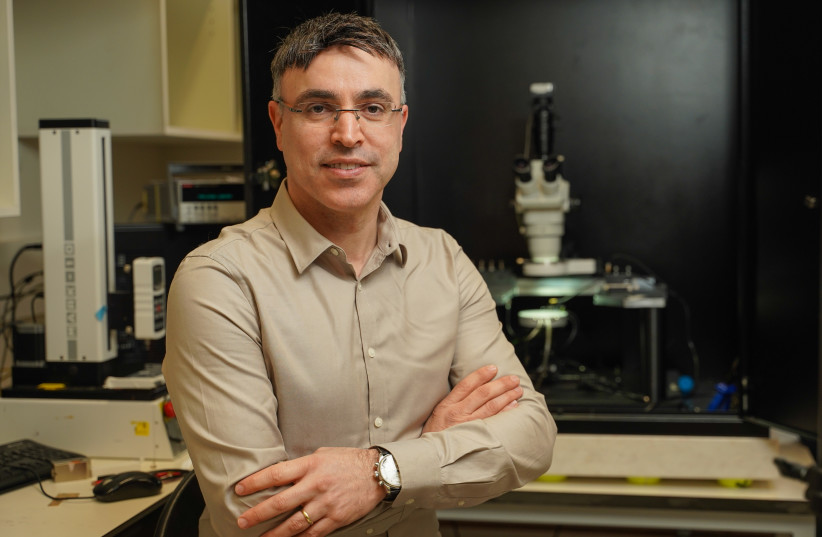
Electronic nose” (eNose) technology, developed at Haifa’s Technion-Israel Institute of Technology, can detect tiny molecular changes in a patient’s blood.
A simple and quick breath test using the “electronic nose” (eNose) technology developed at Haifa’s Technion-Israel Institute of Technology has proved effective in verifying the diagnosis of atherosclerosis in patients at Petah Tikva’s Rabin Medical Center-Beilinson Campus.
The artificial nose makes use of a row of sensitive, submicroscopic (nanoparticle) gold sensors that can detect tiny molecular changes in the patient’s blood. The arrays are trained to identify disease biomarkers and screen high-risk groups for specific diseases, as well as monitor treatments in people affected by that disease. It has already been successful in detecting a variety of diseases, including some types of cancer.
The study used the eNose technology, which was developed at the Technion by Prof. Hossam Haick of the Wolfson Faculty of Chemical Engineering. Its effectiveness was verified in the diagnosis of obstructive arteriosclerosis, cancer and other diseases.
About two decades ago, Haick was working on a doctoral degree at the Technion when he learned that his friend and coworker had been diagnosed with leukemia. It was Haick’s first close encounter with cancer and the physical toll its treatment could wreak on a person. “He’s fine now, but it was very difficult to see him suffer,” he recalled.
Dr. Inbar Nardi, who initiated and led the study in Beilinson’s cardiology department and collaborated with Haick and Dr. Yoav Broza of the Technion, examined whether it is possible to predict sclerotic heart disease with the eNose.
 Chemical engineer Prof. Hossam Haick (credit: TECHNION-ISRAEL INSTITUTE OF TECHNOLOGY)
Chemical engineer Prof. Hossam Haick (credit: TECHNION-ISRAEL INSTITUTE OF TECHNOLOGY)Atherosclerosis occurs when the coronary arteries that carry oxygen and nutrients from the heart to the rest of the body become thick and stiff, sometimes restricting blood flow to the organs and tissues. Healthy arteries are flexible and elastic.
“This is an initial study that provides motivation and justification for the continued development of the eNose, which has now proven its effectiveness in the field of heart disease,” Nardi said.
The study has just been published in the journal Cardiology under the title, “Detecting Coronary Artery Disease Using Exhaled Breath Analysis.”
In the first part of the prospective pilot study, about 60 patients aged 30 to 80 who did not have a history of heart disease were examined in the hospital’s emergency department because of chest pains. The subjects blew into the eNose, and the results of the breath tests were classified according to the patients’ real atherosclerosis status as shown by actual or virtual coronary catheterization.
According to the results of the first part of the study, models were built comparing three degrees of severity of atherosclerosis disease ? its absence, the presence of the nonobstructive type and the presence of the obstructive type.
In the second phase of the study, the models were used to examine the ability to distinguish among the three atherosclerosis conditions in 25 additional patients.
The study showed for the first time that the breath test was able to correctly separate patients with normal arteries from patients with atherosclerosis ? with a sensitivity of 69% and a specificity of 67%. These are encouraging initial data regarding the diagnostic ability and accuracy of the system, Nardi said.
“This is a preliminary and extraordinary study that provides motivation and justification for the continued development of eNose technology as a simple, fast and noninvasive diagnostic tool for diagnosis in the field of cardiology as well,” she concluded.
Source: JPOST